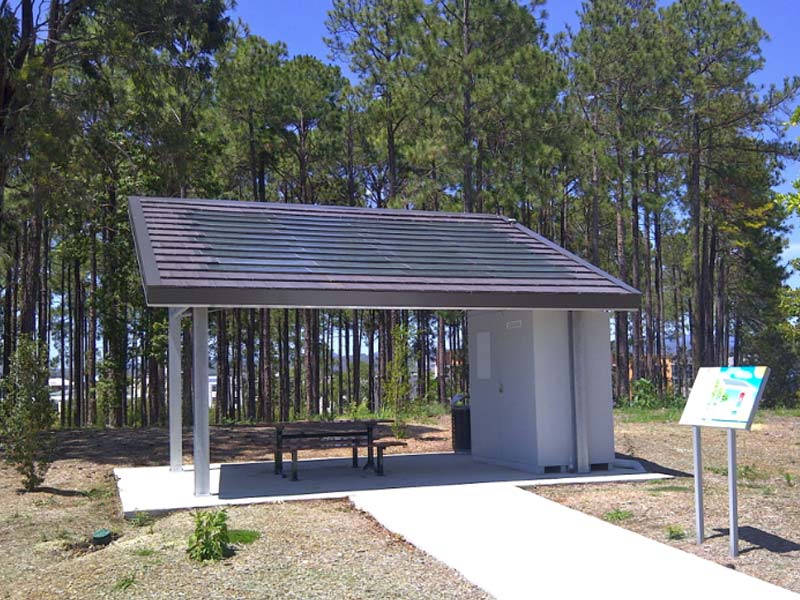Building-integrated photovoltaics – or BIPV – combines the next generation of smart materials with the latest in PV tech, and it’s coming to a building near you.
“History is littered with technologies that were touted as the next big thing, but ended up being little more than a niche item or an expensive novelty. Think Segways, or laserdiscs. For a while there it looked like the same fate might befall building-integrated solar photovoltaics, aka BIPV – the technology that sees solar PV integrated into conventional building materials such as roof tiles, windows and wall cladding. It’s an idea that has been threatening to revolutionise the solar industry for years, but has been held back by technical challenges and high costs and the unassailable market dominance of regular old roof-mounted PV.
Lately, however, there have been signs that BIPV’s time may have come. Last year, market research firm N-tech Research released a report that said the BIPV market would surge to US$26 billion by 2022, up from about $3 billion in 2015. The research said BIPV’s growth would be based largely on the superior aesthetics of BIPV, as well as the evolution of new smart materials and multifunctional products – such as PV glass that also offers thermal and acoustic insulation.
Another key factor is the growing push for better energy efficiency standards in buildings – especially in Europe, where green building policies (such as the European Energy Performance of Buildings Directive) are making technologies such as BIPV almost obligatory in new buildings. As a result, Europe accounts for 41 per cent of the global BIPV market, according to a 2015 report from Transparency Market Research, followed by North America with 27 per cent…”
“…But while major installations might be few and far between, there are some exciting developments in design and innovation. Leading the way is Sydney-based Trac Group, which has developed a lightweight PV roof tile called the Tractile. The product’s killer feature is that it also incorporates solar thermal hot water, thereby generating both electricity and hot water from a single unit, and gaining some additional efficiencies along the way. As Trac Group explains: “Tractile is slightly more efficient due to the cooling effect that the circulating fluid has on the solar panel, which reduces thermal resistance, which in turns allows the electrons to flow more freely and thus more electricity is yielded from the panel.” The company now plans to roll out its products internationally.
Industry Q&A
To get a better picture of the state of BIPV in Australia, we spoke to two of the leading lights in the sector: Trac Group managing director Jason Perkins, and Adelaide-based solar professional Newman Mundy, whose company NME Solar has installed some of the biggest commercial BIPV systems in Australia, including the Fullarton Road project mentioned above.
Why is BIPV attracting so much interest at the moment?
Jason Perkins: I think BIPV is attracting interest because traditional roof-mounted PV is considered ugly.
Newman Mundy: BIPV is starting to get some attention as architects and building owners are trying to become greener. They are also trying to build smart buildings with as little power usage as possible. With the price of energy increasing every year, people are looking for whatever way they can to reduce the inflating prices. BIPV is just one of the options and it makes sense to use a product for multiple uses rather than just one. For instance, solar cladding produces power and protects the building.
What are the main pros and cons of BIPV compared to roof-mounted PV?
NM: In Australia the main disadvantage of BIPV is that it’s not commonly seen or used. I don’t think it has taken off here as much as other countries because our sun sits so high, so using BIPV in vertical applications such as cladding or windows makes less sense. Also, the cost of it here may be stopping BIPV from taking off, as not many companies have experience in designing, engineering and installing these types of products.
I think the main advantage is that you’re getting a return on investment from your building envelope which you normally would not get. People pay huge money for windows and fancy glass for their building façades, and all they do is protect the building from the elements. With BIPV you get the protection for the building but you’re also generating green electricity.
How does BIPV compare to traditional PV in terms of affordability?
NM: Putting solar panels on the roof is still the cheapest easiest way to create power from solar, but if fast returns aren’t all you’re looking for then having a building envelope that gives you some sort of ROI is better than just your standard products.
Jason Perkins: In the long term, the cost of BIPV has been calculated to be cheaper.
How widespread is the technology in Australia?
Jason Perkins: The technology is not widespread in Australia. I don’t have an exact figure, but traditional roof-mounted solar is the most common type by far.
Newman Mundy: Australia hasn’t taken up a huge amount of BIPV, but there are a few systems out there, including the large commercial solar façade installed in Adelaide by NME Solar. There are also some tram stops here in Adelaide and a few other small jobs around. I would like to see more of these jobs happen.
What does the future hold for BIPV?
Newman Mundy: The expectation is that the demand for BIPV will grow significantly as a replacement for traditional roofing and roof-mounted solar.
Jason Perkins: Our vision of the future is that every building is designed and built with BIPV. This will become especially prevalent with the introduction of electric vehicles. A typical electric vehicle will use as much power in a year as a household. So if most of us continue to have two cars parked at home, that is a potential tripling of electricity and the obvious source is renewable energy from the roof of the building the cars are parked in.





